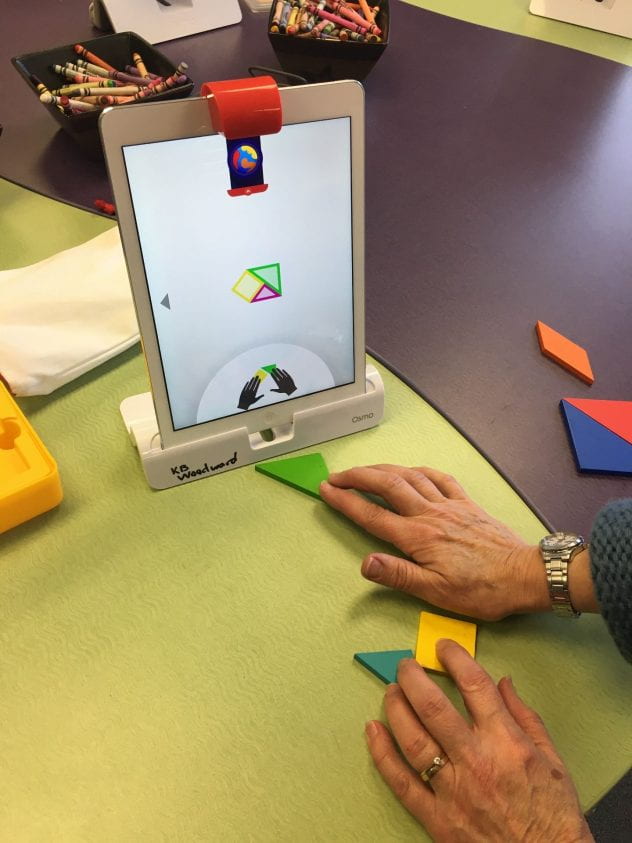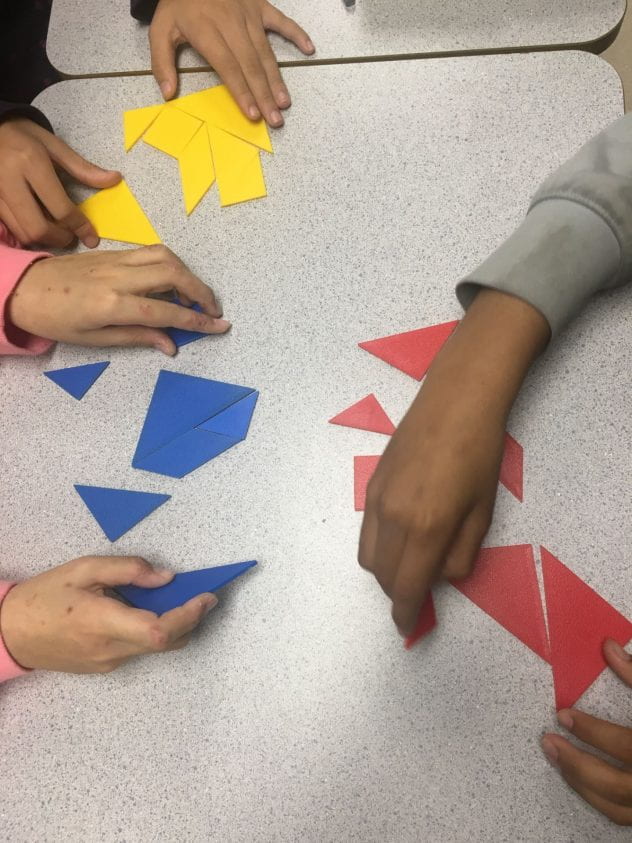By Christa Rawlings (MEd in IE; Grade 6 Teacher, Learning in Depth Teacher)
Welcome back to: The Heroic Classroom. Over the course of this year I am on the hunt for two things:
1. Reflections on my lessons and how various Heroic Qualities present themselves.
2. Observations of how/if students recognize Cognitive Tools in action and how they put the tools into use themselves throughout the school year.
I hope you continue to follow along on our IE adventure!
The Heroic Classroom: September 12
Heroic Quality of the Day: Perseverance
Today was a great day. I started my Tangram lesson with the class. I have done this as a September lesson for years now. We look at:
- A narrative about the ancient puzzle: A Sage’s Journey by John L. Lehet
- A story using Tangram: Grandfather Tang by Ann Tompert
- Playing with the puzzle itself and trying to create the Tangram square.
The exclamations and groans that came out of the kids was fun to witness. Evil teacher? Maybe. But, there is a reason I do this at the beginning of the school year. It evokes a sense of mystery. Mystery is a fabulous tool to have in your Imaginative Tool Kit. Being comfortable with feeling uncomfortable takes practice. Some of these kids need practice to push past the feeling that something is too hard.
This class was definitely uncomfortable. But, I wouldn’t let them give up. Oh, but they certainly wanted to! They begged me to show them the answer. I refused (maybe I am an evil teacher).
It took about 20 minutes before someone made the square this morning. There was a cheer from everyone. That student went around and showed other kids how to do it and those kids showed more kids. Persevering and pushing through the ‘crisis’ of not knowing how to do something is the best feeling. They were pretty proud of themselves. I will refer back to that feeling of pride from their perseverance several times over the year.
For the rest of the week, the students will be put into pairs to create a Tangram puppet show and script based on the style of Grandfather Tang. I always look forward to see what they come up with.
The Heroic Classroom: September 14
Heroic Quality of the Day: Purpose
The class was working on their Tangram Puppet shows this morning. Our librarian came in with the iPads to show us all the Osmo program. We decided to invite the Principal in to see the kids at work and demonstrate that a few more of the Osmos would be a great addition and well worth it. He asked the kids what the purpose of the on the iPads was. I knew what my purpose was, but the kids didn’t. Oops!
The purpose I had for bringing the iPads in was for all of us to learn the program and find more shapes for their tangram scripts, but what was the cognitive purpose? To add to their collection of shapes? STEM work? The tangrams themselves are the puzzle, they are the mystery. I had the Imaginative Tools sorted out and the students were definitely engaged in the process but what was my purpose? How does the path I had taken with the Osmos and Tangrams actually tie to the actual BC curriculum? I am going to have to make sure I take more time solidifying these things before diving into activities. Today reminded me of a few years ago when I would post the learning outcome on the board. I need to start doing that again. In the past I found it gave students a purpose for their learning. Being able to see the direction and goal of the lessons made for a much more engaged group of kids.
I need to be more mindful of the purpose of my daily lessons and work with my students. I need to make sure they are always aware of the purpose. These are Grade 6 and 7 students. There is no reason why they can’t be a part of the process. Lesson learned.
Need to catch up? Take a look at some of the other posts from my Heroic Classroom series:
#1 Introduction to The Heroic Classroom
#2 The Heroic Classroom – Trust and Ownership
#3 The Heroic Classroom – Flexibility and Story
Other posts by Christa Rawlings
Check out this post in which I describe why I use cognitive tools in my teaching: The Selfish Teacher
Using Cognitive Tools to teach Place Value to Grade 6 and 7 students: Place Value and Really Big Numbers



